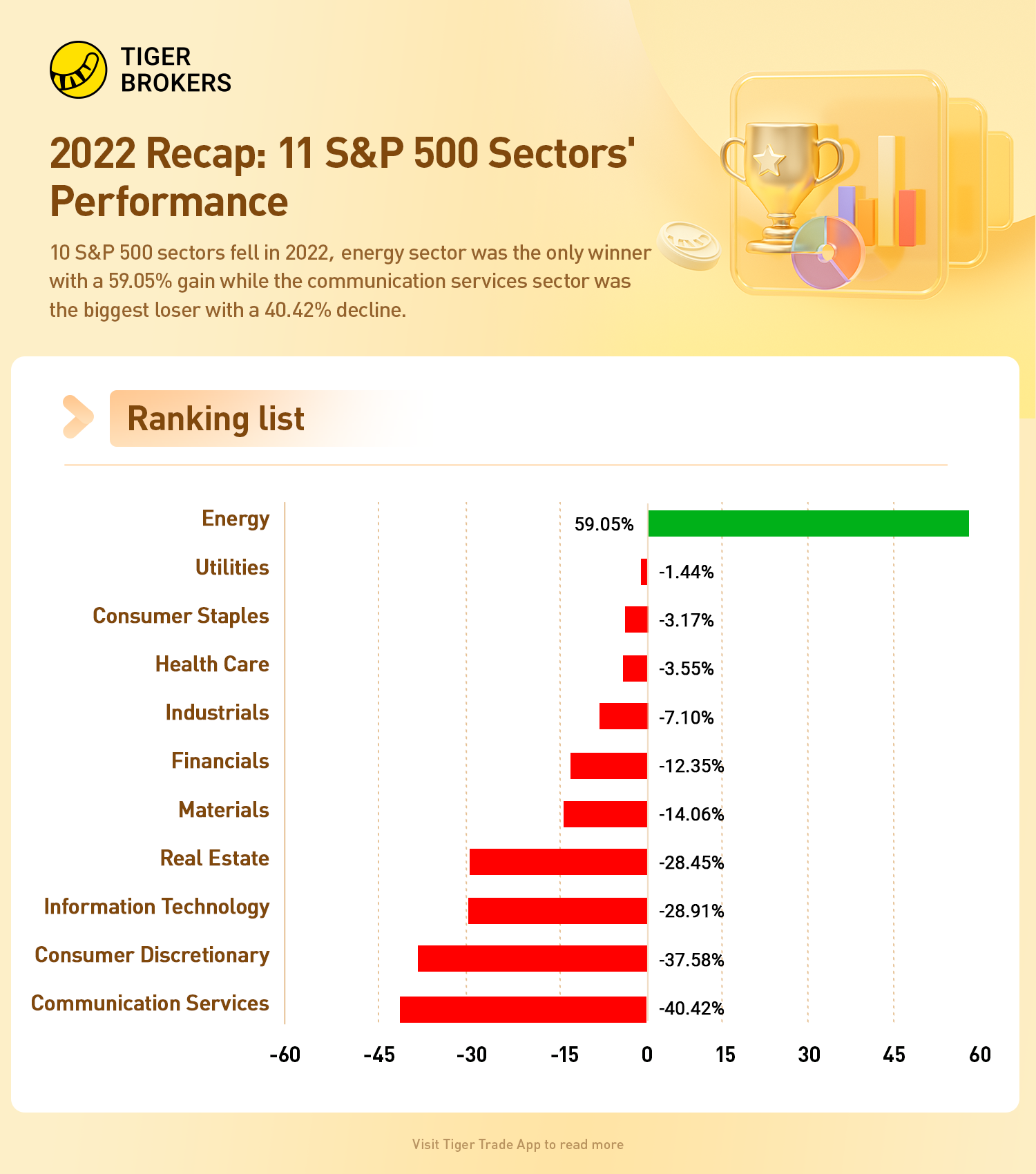The year 2022 has been very challenging for the U.S. stock market. The value of the S&P 500 index has decreased by 19.44%. The Dow Jones Industrial Average has seen a loss of 8.78%, while the Nasdaq Composite has lost more than 33%. The hawkish monetary policy established by the Fed in the U.S. and inflation achieving its top reading in over 40 years were the primary factors that led to the majority of the sell-off that took place.
Communication services was the worst performing sector in the S&P 500 this year, falling more than 40%, followed by consumer discretionary. Energy was the only sector to rise, climbing 59%.
The following table details the overall performance of the S&P sectors in 2022.
Energy Sector
If there is one industry that has been able to give even the most inexperienced trader a significant tailwind, it is the energy industry.
The conflict in Ukraine drove up the price of energy to within striking distance of all-time highs; for example, the price of Brent oil peaked at $130 a barrel.
The energy industry as a whole did exceptionally well, and it was the top-performing sector for the S&P with gains of 59.05%. In general, the energy sector's performance was quite positive.
Consumer Staples
When the economy shows signs of slowing down, investors and traders tend to flock to this specific industry since it works as a safe haven for their money. But it has nevertheless posted losses of over 3% this year. As a general rule, during times of economic difficulty, this industry does see a larger proportion of mergers and acquisitions (M&A) activity because values decrease to a level that is more acceptable. On the other hand, this year there have been very few significant deals that have taken place.
Financial Sector
This specific industry, which many people believed would do well, failed to impress on the scoreboard, and its value has dropped by more than 12% this year. The Federal Reserve in the United States has recently boosted interest rates at the most aggressive levels in decades. This caused a tremendous amount of volatility in the market, which resulted in a significant number of banks reporting a respectable profit from their trading operations. In spite of this, many people have started to examine the state of their company's balance sheet as a result of rising interest rates because they are concerned about their ability to weather an economic downturn and maintain a healthy financial position.
Information Technology Sector
The information technology sector of the S&P 500 saw a year-to-date decrease of 28.91%. The Federal Reserve proceeded to rapidly boost interest rates, which resulted in a slowdown in economic activity. Additionally, there was a great possibility that a recession would take place in the United States. As a result, a huge number of corporations reduced their CAPM. As a direct consequence of this, we saw a significant number of firms' stock prices significantly decline.
Consumer Discretionary Sector
This industry has lost more than 37% in 2022. It is important to keep in mind that this specific industry is representative of discretionary expenditure, and we are aware that, as a result of inflation and interest rates reaching multi-decade highs, disposable income was tremendously affected in a negative way. Consumers have been having a hard time keeping up with their cost of living and have been making cutbacks wherever they can find the opportunity. As a result, we saw a significant increase in the amount of competitive selling in this industry.
Communication Services Sector
Shares of communications services firms have had a year decline in value of 40.42 percent. This collection of companies carried a substantial amount of debt, which, when combined with rising interest rates and subsequent increases in the amount of interest that was payable each month, was a significant strain on the company's finances. In addition, interest rates continued to rise, which further increased the amount of interest that was payable each month. It is also usual for communications companies to have high dividend payout ratios, which made matters even more difficult for them. As a direct result of all of these challenges, this sector has had a terrible year.

Comments